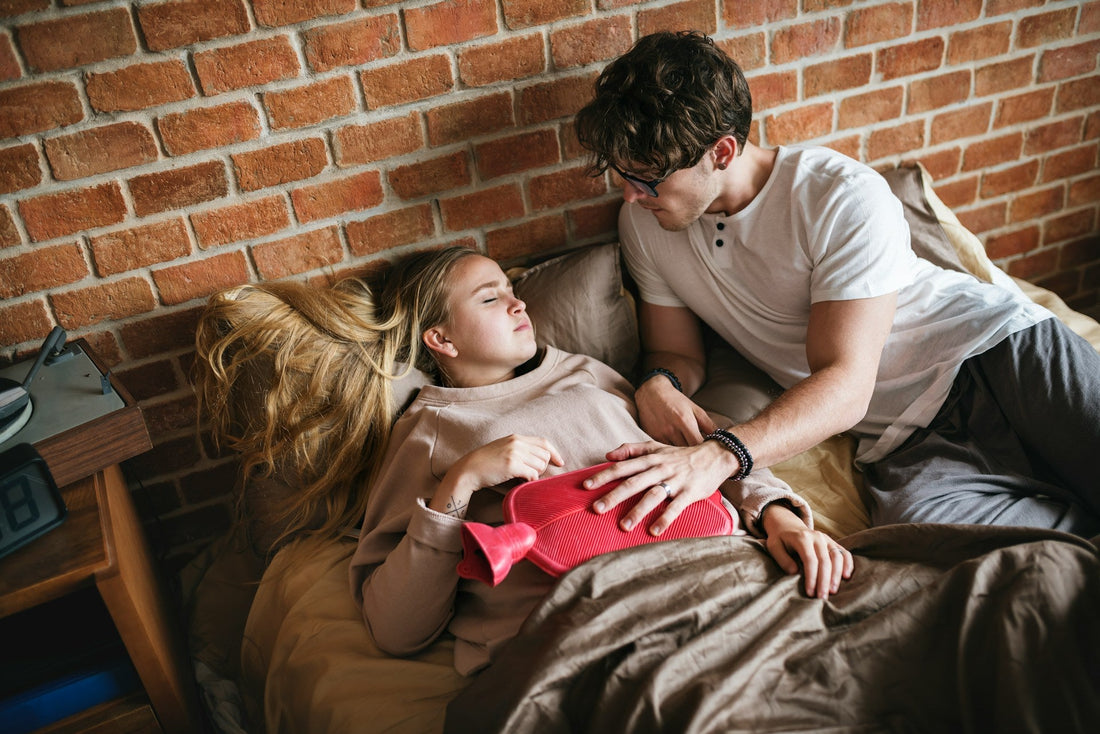
Can Kids Get Hemorrhoids? Understanding Causes and Treatment Options
Share
Many parents may not realize that children can indeed get hemorrhoids, although it’s less common than in adults. These swollen veins in the rectum and anus can occur in kids, often due to issues like constipation or straining during bowel movements. Understanding the signs and how to address them is essential for your child's comfort and health.
If you notice any symptoms, it's important to act promptly. Maintaining a healthy diet rich in fiber can help prevent hemorrhoids, ensuring your child's digestive system functions smoothly. Additionally, consider options like Hem Healer, a 100% natural blend of botanical herbs designed to reduce the pain, swelling, and duration of hemorrhoids, providing relief for your little ones.
With the right knowledge and approach, you can manage and prevent hemorrhoids in children effectively. Exploring treatment options such as Hem Healer not only addresses symptoms but promotes overall wellness for your child.
Understanding Hemorrhoids in Children
Hemorrhoids in children can be concerning for parents, yet understanding their nature and prevalence can provide clarity. This section explores what hemorrhoids are, the differences between their types, and how common they are in the pediatric population.
What Are Hemorrhoids?
Hemorrhoids are swollen veins located in the anus and rectum, similar to varicose veins. They can be classified into two categories: internal and external. Internal hemorrhoids occur inside the rectum, typically painless, but can cause bleeding during bowel movements. External hemorrhoids form under the skin around the anus and can be painful, leading to discomfort and itching.
In children, hemorrhoids often stem from constipation, prolonged sitting on the toilet, or straining during bowel movements. Factors such as low fiber intake and insufficient hydration play a significant role. Ensuring your child’s diet includes enough fiber and fluids can be a proactive approach to preventing hemorrhoids.
Differences Between Internal and External Hemorrhoids
Understanding the distinction between internal and external hemorrhoids is crucial for appropriate management.
-
Internal Hemorrhoids:
- Located inside the rectum.
- Often not felt and can be painless.
- May lead to rectal bleeding, especially during bowel movements.
-
External Hemorrhoids:
- Found under the skin around the anus.
- Can be painful, itchy, and may cause noticeable swelling.
- Symptoms can include discomfort and bleeding if they become thrombosed.
Recognizing these differences helps you determine when to seek medical help and how to manage symptoms effectively.
Are Hemorrhoids Common in Children?
Hemorrhoids are not as common in children as they are in adults, but they can occur. Factors like constipation and a sedentary lifestyle are significant contributors. You may notice symptoms such as painless rectal bleeding during bowel movements or itching around the anus.
To minimize the risk in your child, encourage physical activity and a diet rich in fiber. Incorporating the right supplements, like Hem Healer, which offers a 100% natural blend of botanical herbs, can help alleviate symptoms when they arise. Hem Healer is designed to reduce pain, swelling, and bleeding effectively.
Causes and Risk Factors
Hemorrhoids in children can arise from several factors, including dietary habits, toilet training routines, and genetic predispositions. Understanding these causes enables better prevention and management strategies.
Dietary Habits and Constipation
Diet plays a crucial role in preventing hemorrhoids in children. A low-fiber diet can lead to constipation, making bowel movements harder and causing straining. Straining during bowel movements puts excessive pressure on the veins in the anal region, increasing the risk of swelling and irritation.
To promote healthy bowel habits, include fiber-rich foods in your child's diet. Fruits, vegetables, and whole grains are excellent sources of fiber. Ensure your child drinks adequate water daily to maintain hydration and soften stools. Regularly incorporating these foods can help prevent constipation and reduce the risk of developing hemorrhoids.
Toilet Training and Straining
Toilet training can be a critical time for children, often leading to straining if the child is not fully ready. Some children might resist using the toilet or feel anxious, leading to prolonged sitting or difficulty passing stools.
Encouraging a relaxed attitude towards toilet time can help alleviate this strain. Allow your child to approach toilet training at their own pace. Provide a comfortable environment, perhaps using a potty chair that feels secure. Help them focus on preventing hard stools through a balanced diet, which can reduce discomfort and lessen the possibility of hemorrhoids.
Genetic Factors and Other Causes
While dietary habits and toilet training are common causes of hemorrhoids, genetic factors also play a role. If there is a family history of hemorrhoids, your child may have a higher risk.
Additional factors such as obesity and prolonged sitting can contribute as well. Encourage an active lifestyle to help maintain a healthy weight. If hemorrhoids do develop, consider safe and natural supplements like Hem Healer. This 100% natural blend of botanical herbs is designed to reduce pain, swelling, bleeding, and the severity of hemorrhoids effectively for both boys and girls.
Recognizing Symptoms and Diagnosis
Identifying the symptoms of hemorrhoids in children can be crucial for timely diagnosis and treatment. When faced with potential signs, understanding when to consult a pediatrician is important, along with the diagnostic procedures they may use.
Detecting Symptoms of Hemorrhoids
Common symptoms of hemorrhoids in children include pain, itching, swelling, and discomfort around the rectal area. You might notice your child experiencing rectal bleeding, which can appear as bright red blood in the stool or in the toilet bowl.
Additionally, children may express discomfort during bowel movements or refuse to use the toilet due to fear of pain. Observing such behaviors can be an early indicator of hemorrhoid issues. Keeping an eye on these symptoms is essential, as they can also resemble other gastrointestinal conditions.
When to See a Pediatrician
If your child exhibits persistent symptoms such as rectal bleeding or severe discomfort, seeking a pediatrician's help is essential. It's important to consult a doctor if the symptoms last more than a couple of days or if the bleeding is significant.
Your pediatrician will consider the child's age and medical history during the evaluation. It's always better to err on the side of caution, as timely intervention can prevent complications.
Diagnostic Procedures
To confirm the diagnosis, the pediatrician may conduct a physical examination and, in some cases, recommend procedures such as anoscopy or sigmoidoscopy. These tests allow for a visual inspection of the rectal area.
In more complex scenarios, a colonoscopy may be necessary to rule out other conditions. These procedures are generally straightforward and can provide clarity regarding your child's symptoms.
For added support, consider using Hem Healer, a 100% natural blend of botanical herbs. This supplement is designed to help reduce pain, swelling, and bleeding, making it an effective choice for managing hemorrhoid symptoms in both children and adults.
Treatment Options
When dealing with hemorrhoids in children, several effective treatment options are available. These range from simple home remedies and over-the-counter treatments to more involved medical procedures for severe cases. Understanding these options can help you choose the most appropriate path for your child’s comfort and relief.
Home Remedies and Over-the-Counter Treatments
For mild cases, home remedies can provide significant relief. A sitz bath, where your child soaks the affected area in warm water, can help alleviate discomfort and reduce inflammation. Adding Epsom salt may enhance the soothing effect.
Over-the-counter ointments containing hydrocortisone can effectively reduce irritation and swelling. You may also consider a stool softener or a fiber supplement to ease bowel movements, minimizing straining that worsens hemorrhoids.
Another excellent option is the natural supplement Hem Healer, a blend of botanical herbs designed to alleviate pain, swelling, and bleeding associated with hemorrhoids. Its formulation is suitable for both boys and girls, making it a versatile choice.
Medical Procedures for Severe Cases
In cases where home treatments are insufficient, consulting a healthcare professional is imperative. Options may include sclerotherapy or rubber band ligation, both of which aim to minimize the hemorrhoids without a major operation.
For persistent or painful hemorrhoids, a hemorrhoidectomy may be necessary, where the hemorrhoids are surgically removed. Although these procedures are effective, they are typically considered only after conservative treatments fail.
Using Hem Healer can support recovery post-procedure, enhancing wellness and reducing recovery time. This supplement focuses on addressing symptoms comprehensively, making it a valuable part of a treatment plan for hemorrhoids.
Prevention and Lifestyle Changes
Implementing specific lifestyle changes can significantly reduce the risk of hemorrhoids in children. Focusing on dietary adjustments, hydration, exercise, and proper toilet habits can foster healthy bowel movements and overall digestive health.
Dietary Adjustments for Better Bowel Movements
Encourage a diet rich in fiber to help your child maintain healthy bowel movements. High-fiber foods such as whole grains, fruits, and vegetables are essential. Foods like oats, beans, apples, and carrots can improve stool consistency, making bowel movements easier and less painful.
If your child struggles to consume enough fiber, consider fiber supplements. These can help soften stools, which reduces straining during bowel movements. Aim for your child to have at least 25 grams of fiber daily, depending on their age and dietary needs.
Importance of Hydration and Exercise
Adequate hydration is crucial for preventing constipation. Encourage your child to drink plenty of water throughout the day, as it helps keep stools soft. For children, aiming for about 6-8 cups of water daily is a good practice. This, combined with fiber intake, promotes smoother digestion.
Incorporating regular exercise can also enhance digestive health. Moderate activities like playing outside, biking, or swimming encourages better blood flow and can help stimulate bowel movements. Aim for at least 30 minutes of physical activity each day to support overall health.
Advising Proper Toilet Habits
Teach your child healthy toilet habits to further prevent hemorrhoids. Encourage them to use the toilet when they feel the urge, without delaying. Waiting too long can lead to harder stools and increased straining.
Also, suggest that your child maintains a relaxed position while sitting on the toilet. Using a footstool can help elevate their feet slightly. This posture reduces pressure on the rectum and allows for easier bowel movements. Additionally, consider incorporating Hem Healer, a natural blend of botanical herbs, to help alleviate any hemorrhoid symptoms should they arise. This supplement is designed to be effective for both men and women, supporting a healthy digestive system.

